Mamiya C System Review Part 3: Mamiya Super-Sekor 180mm f4.5
And we're onto another installment of the Mamiya C System review! Last time we looked at a lens. Now we're looking at a...super lens! It's the Mamiya Super-Sekor 180mm f4.5.
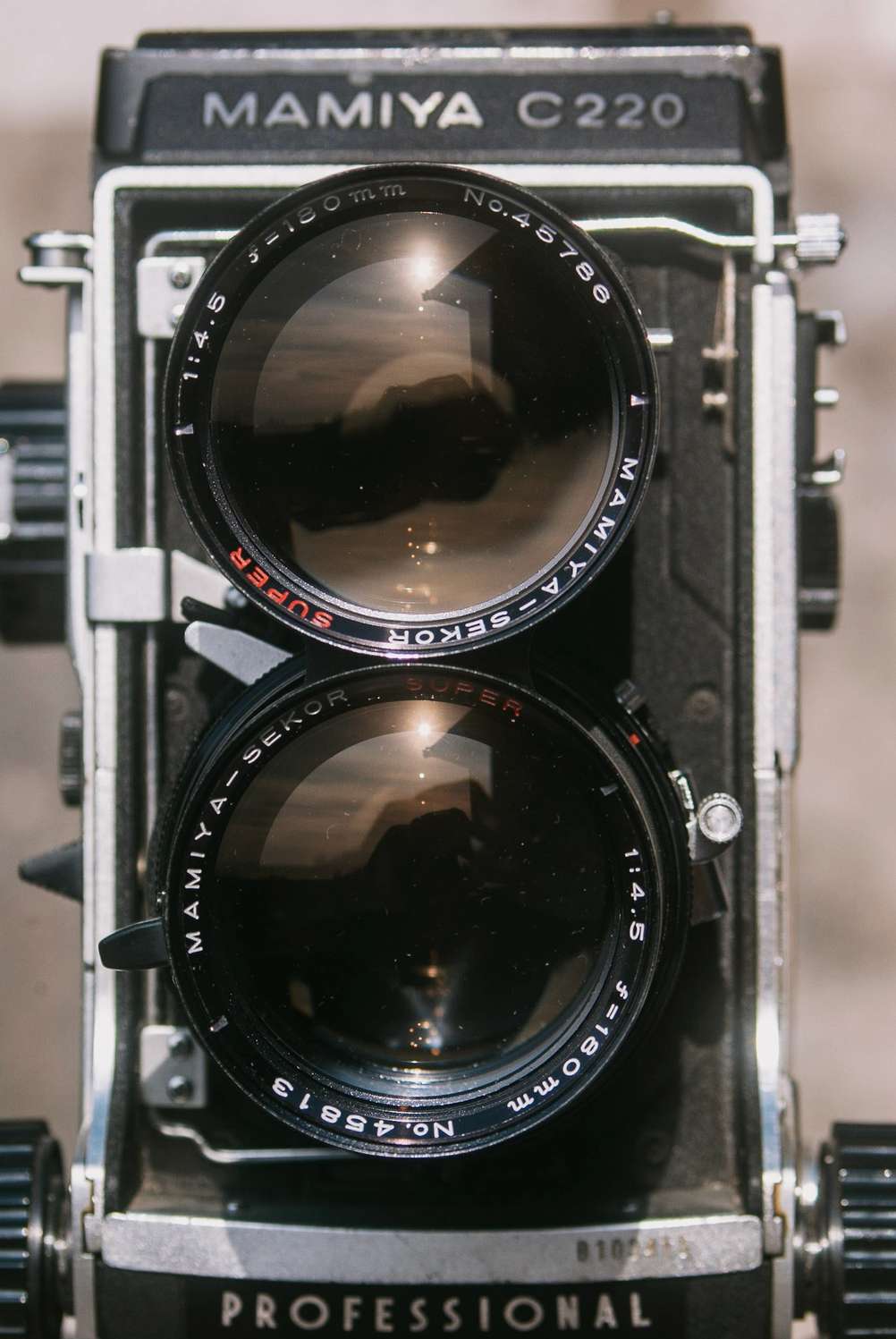
Stare into the soul of this lens ( lenses? ).
180mm sounds like a long telephoto lens in a 35mm world. In 6x6 it's still a telephoto but a more modest one. It's roughly a 100mm equivalent in 35mm / full-frame.
Previously I reviewed the 80mm f2.8 lens. It was not the latest version of that model. This time I have one of the later ( of not the latest ) versions of the 180mm f4.5 lenses for this system. You can tell that by the "Super-" prefix! Clearly if it says "Super" it must be super right? It's not the only way to tell the later versions apart. Previous versions were a bit more chrome whereas this one is almost pure black.
Although the 80mm blue-dot version seemed to be an improved coating version. The "Super" version in 180mm is actually a different optical design. The "non-Super" had 4 elements in 3 groups whereas "Super" has 5 elements in 4 groups. More elements, more super. The redesign was there to improve the resolving performance. Especially wide open. The rendering would've also become a tad more modern.
I got mine from the faraway land ( for me ) - Japan. It is in almost mint condition ( and it didn't even say "mint" on the listing! ). Came with a case, hood and two filter-like things. I'll write about those in a few paragraphs. They aren't super common on Ebay. I would expect elsewhere as well. When you find them they seem to cost roughly around 200 USD ( at the time of writing ).
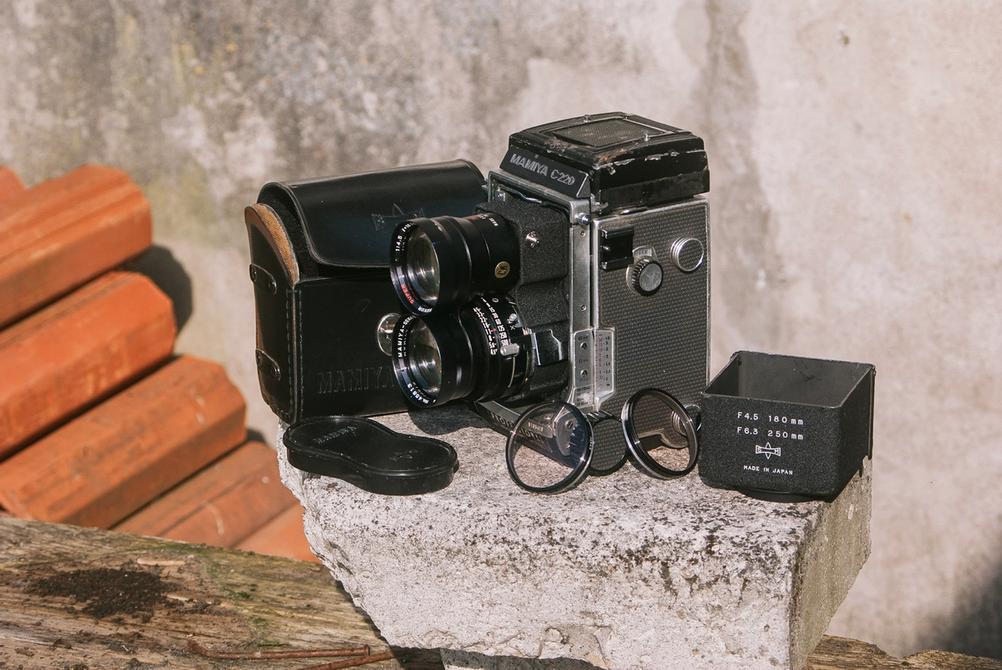
The whole package plus a camera. If I ever get the 250mm f6.3 then I already have a hood sorted.
I also have to note that it's very difficult to put the lens into the case...and then later to take it out.
Build & Ergonomics
As it's a TLR lens - it's two lenses combined on a single board. Two 180mm lenses in one might sound super heavy. And it is quite heavy. To combat the heaviness the lens uses super thin metal as the shell around the glass lenses. It's all super solid and all - just very thin. This is where the two filter-like things come in.
The filter-like things are screwed in like filters. Glass on the filters doesn't add any effect to the images so you can see them as protective filters. For example many people use UV filters to protect the front element. You can see these as protective filters as well. But it's only purpose isn't to protect the front element. The metal around the filters is quite thick. Can you guess why? These filters served a second purpose. Purpose where they protected the filter thread area from bending. Because the metal in that area is super thin - a tiny bump could add a dent to the metal which would forbid you from using filters ( or worse ). With these filters on that is less likely to happen. As it is with optional things - most of these are now lost so most copies of this lens come without them. Do I use these filters? No.
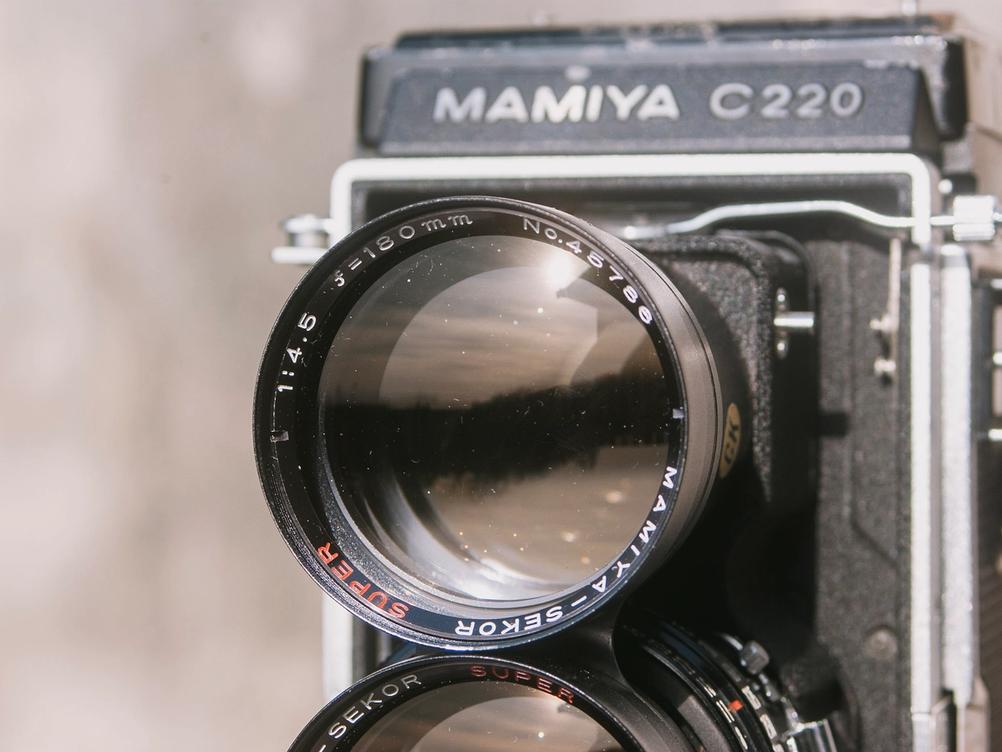
You can see that the metal around the lens and especially in the filter area is really thin. The filter screws into the filter area and also allows other filters to be screwed within.
As I said the build is solid. It feels heavy and it is heavy. Together with the camera it's definitely quite a hefty package. You can still carry the camera around the neck but you will start to feel it after a while. The somewhat long size makes the camera fall away from you when it is strapped around your neck. Typically you would want the camera to be neutral or fall into you.
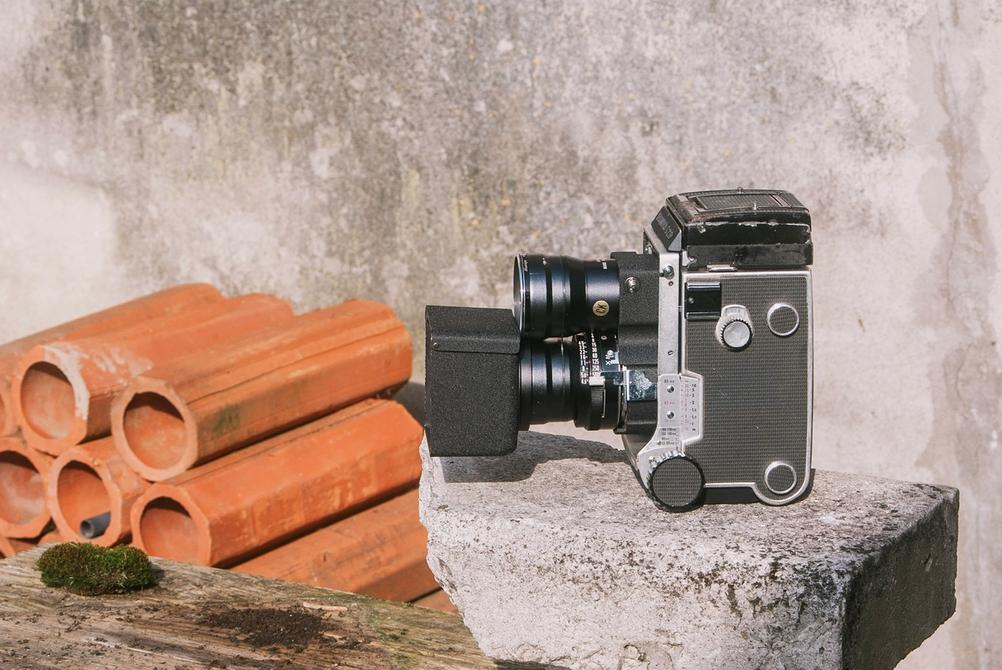
The lens with all attachments makes for quite a comically sized package. It definitely doesn't look ergonomic. With a strap it's manageable.
The hood itself is like a small house for the bottom lens. It slightly blocks the viewing lens although it doesn't matter too much in real life. I don't tend to use it much if at all.
In retrospect I also should've made a photo with it focussed to the closest distance. It's even more comical then. It can't keep the balance at all at full extension and is highly front heavy.
I wasn't too impressed with the controls on the 80mm lens. They are better on the 180mm. They are still made from plastic but they feel more solid and there is no play in them. Clicks for settings are more definite and aperture is clicked as well. The 180mm lens is younger which likely plays a part in why it feels better. And it's possible that newer versions were also built better.
Shutters speeds go from 1/500 of a second to a full second - all in full stop increments. Changing shutter speeds is easy but not so easy to do it by accident. Clicks are very nice and satisfying.
Aperture goes from f4.5 to a mind bending f45. I'm used to f22. I can even understand f32. f45 seems a bit extreme. I have yet to shoot it at this aperture but surely diffraction would impact the image quality at this stage. At least you would have more in focus so that's the likely reason for the crazy small aperture. Similar to shutter speed control - it's easy to change but not easy enough to do it by accident. Clicks are equally nice.
There's also a flash sync speed setting. Moving onwards...

Controls look largely like on the 80mm but they feel much better.
All in all the build quality is very good. An improvement over the 80mm which lacked in the control quality department. Ergonomics are better on the 80mm. But when you consider that it's a long-ish telephoto lens...one can forgive the ergonomics. It will never be as good as a smaller normal lens would be. Actually using the lens is the same, if not better because of the improved build quality. But the added weight does have a slight negative ergonomic impact. I definitely prefer the build quality to be super - even if it means heavier lens.
Lens Rendering
I didn't enjoy the 80mm lens at the start and it took me a while to start loving it. With the 180mm - I loved it straight away. It was also one of the reasons why I didn't abandon the C220 camera. Or the whole C System.
Sharpness
The lens is sharp. Even wide open it's very sharp. You might say that f4.5 is not super wide open. But on 6x6 it's plenty wide and will give you the tiniest depth of field. Especially when focusing close.
The sharpness is across the whole frame. Wide open there is slight corner distortion but it's super small. It's only the very, very corners and seem to impact the bottom ones more. Close it even by a stop and it goes away. It's super sharp everywhere.
I don't have much else to say about sharpness. If you're looking for a more vintage sharpness with some glow then this lens might not be for you. Or just get a hazed copy.
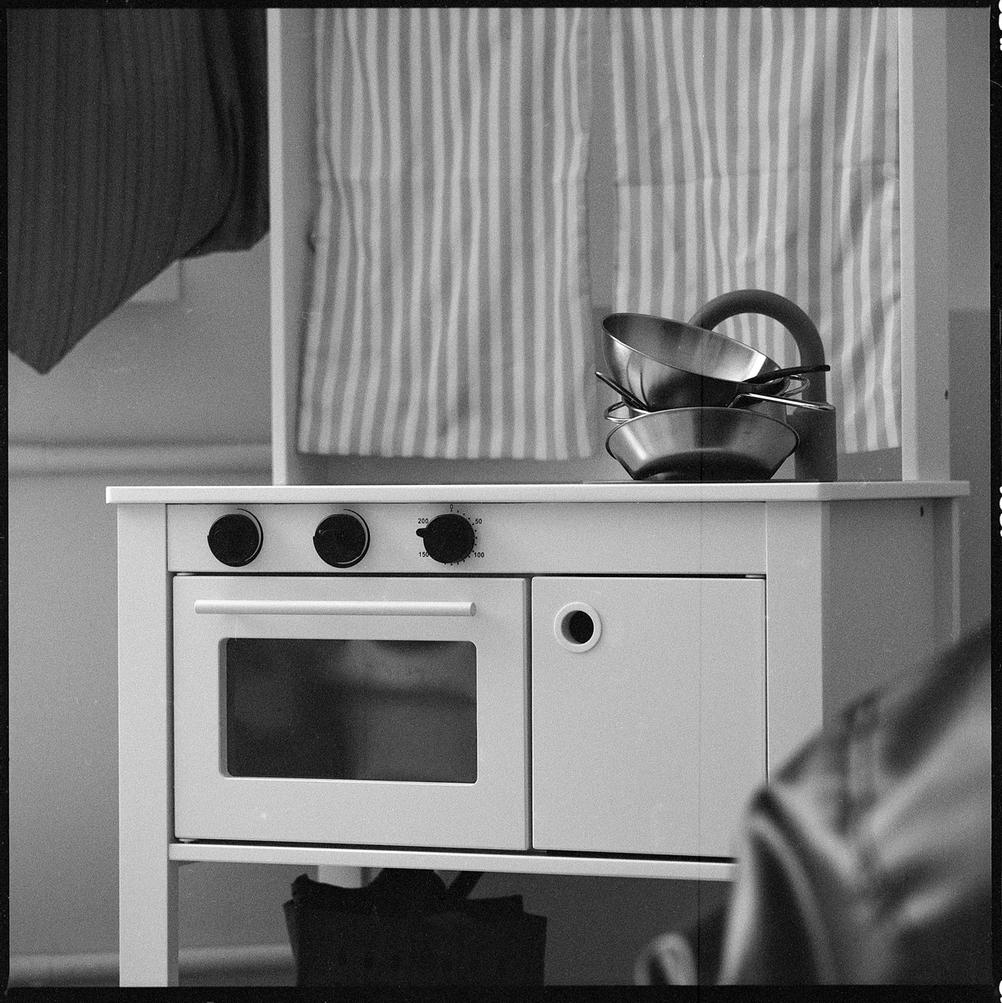
- Camera
- Mamiya C220
- Lens
- Mamiya Super-Sekor 180mm f4.5
- Film
- Ilford HP5+ EI3200
- Development
- Kodak HC-110; Dilution A; 9:30min
- Scanner
- Epson V600
In focus areas are very sharp. Plenty of detail and resolution to be extracted.
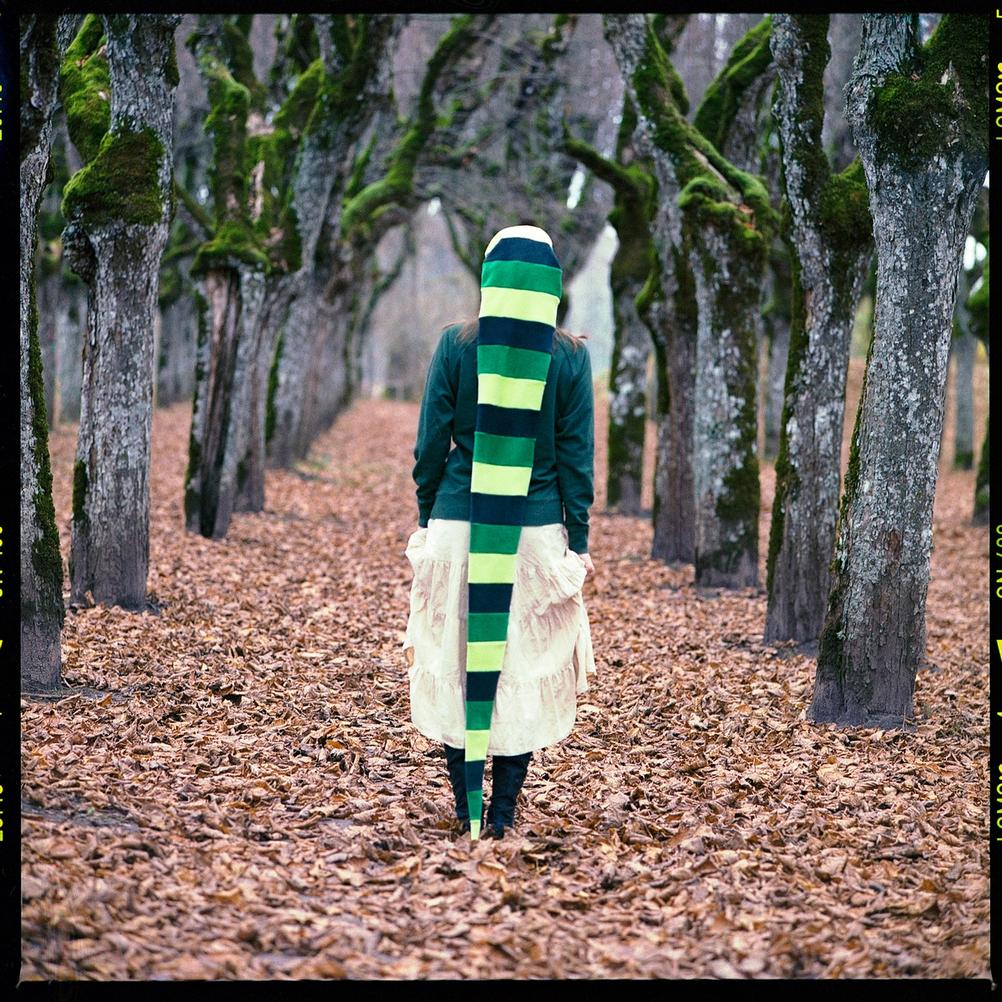
- Camera
- Mamiya C220
- Lens
- Mamiya Super-Sekor 180mm f4.5
- Film
- Lomography Color Negative 400 EI400
- Development
- Tetenal Colortec C-41
- Scanner
- Epson V600
I tried to find a photo where I could see some corner distortion but it's not easy. This was one of the only ones where you can see a bit of smearing in bottom corners. It might be because of the frontal-bokeh though. And if anything - it looks good.
The focus is not 100% nailed on this shot - it's quite difficult wide open. Even if wide open is f4.5.
Contrast
Lens is sharp but part of the sharpness definitely comes from contrast. This lens is contrasty. I would even call it a modern contrast. It's not overblown - you can still push HP5+ to EI3200 and not blow highlights to oblivion.
The 80mm was contrasty but in a "natural" manner. This is contrastier.
As I mentioned in the previous section - if you're looking for a more "vintage" rendering, maybe look elsewhere.

- Camera
- Mamiya C220
- Lens
- Mamiya Super-Sekor 180mm f4.5
- Film
- Ilford HP5+ EI3200
- Development
- Kodak HC-110; Dilution A; 9:30min
- Scanner
- Epson V600
OK this is shot on a film pushed to 3200 but it's still representative.
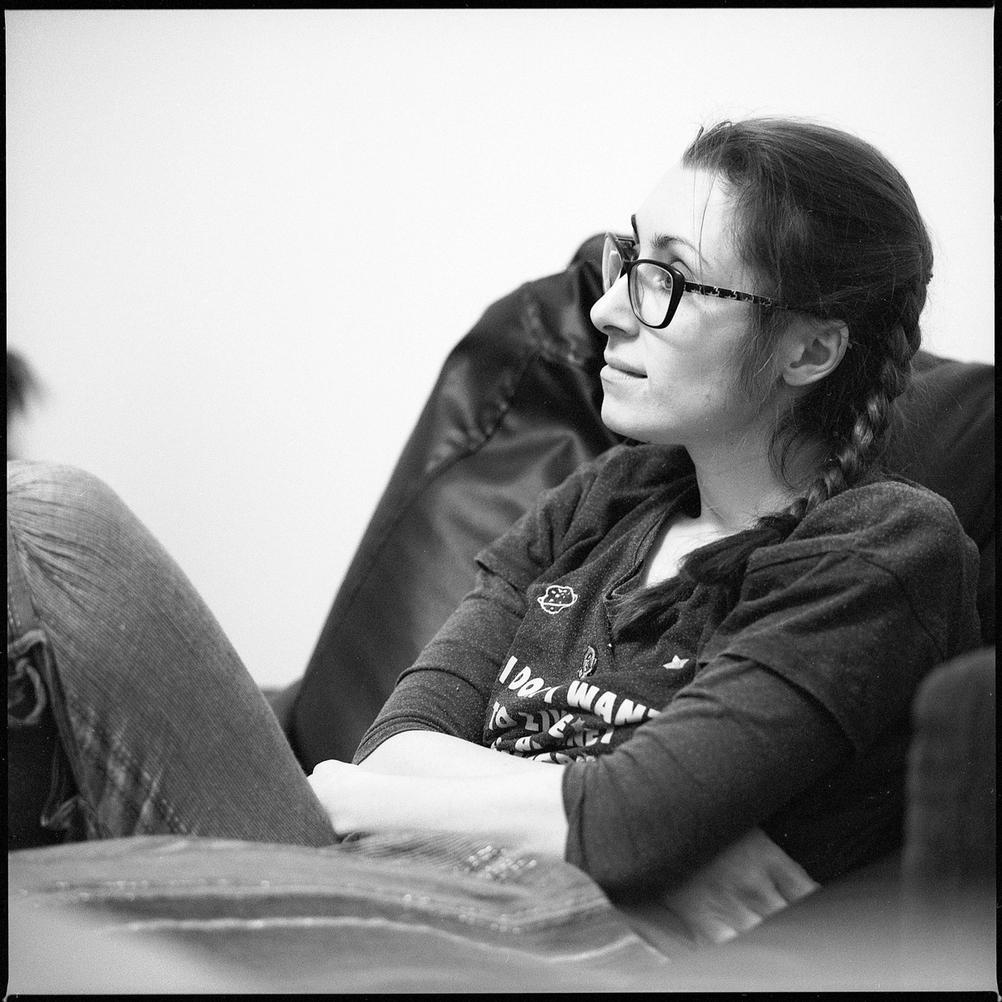
- Camera
- Mamiya C220
- Lens
- Mamiya Super-Sekor 180mm f4.5
- Film
- Ilford HP5+ EI3200
- Development
- Kodak HC-110; Dilution A; 9:30min
- Scanner
- Epson V600
Sometimes the look can be almost digital ( which isn't necessarily a good thing ). Luckily it still keeps that good B&W film charm.
Flare Resistance
As you might expect from the previous two sections - this lens has a modern rendering. This also carries into the flare resistance. It doesn't flare. Strong backlight isn't something that this lens cares about. To the point where I'm not sure why the monstrous lens hood needs to exist.
Not much else to say other than - top scores!

- Camera
- Mamiya C220
- Lens
- Mamiya Super-Sekor 180mm f4.5
- Film
- Lomography Color Negative 100 EI100
- Development
- Tetenal Colortec C-41
- Scanner
- Epson V600
You can see where the sun is. You can see that it's not the weakest source of light. You can also see that the lens doesn't care.
There's maybe a small flare blob at the bottom right of the image but it's not even worth talking about.
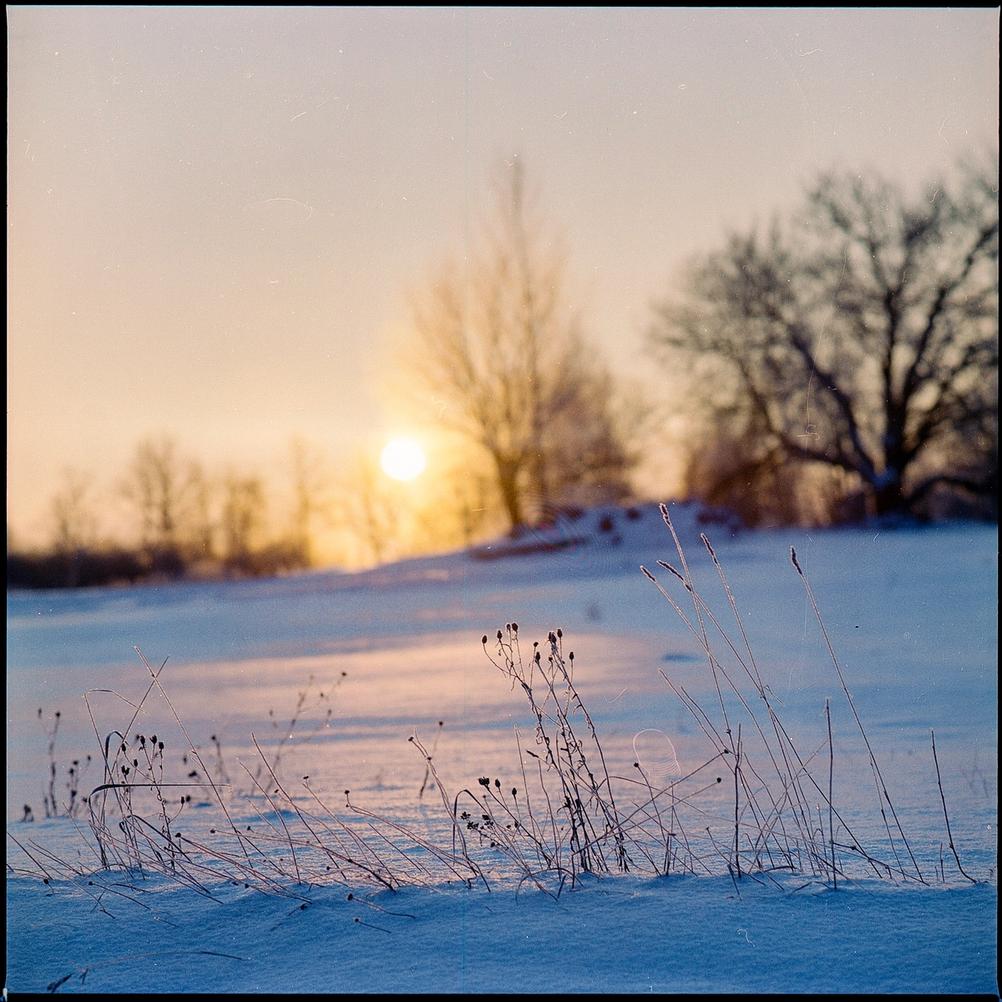
- Camera
- Mamiya C220
- Lens
- Mamiya Super-Sekor 180mm f4.5
- Film
- Lomography Color Negative 100 EI100
- Development
- Tetenal Colortec C-41
- Scanner
- Epson V600
This is not the strongest sunlight as it's a newly rising sun but there's no issues to be seen.
Colors
Colors are on the saturated side but not overly so. They still appear natural. Color balance leans more towards the cold side. Not by much. You won't even notice it on most scenes.
Overall the color rendering is pleasing. I prefer a slight lean towards the warm side instead of the cold one but this lens proves that cold lean can work as well. I've never felt like the colors are too cold or metallic as it can sometimes be with more modern lenses.
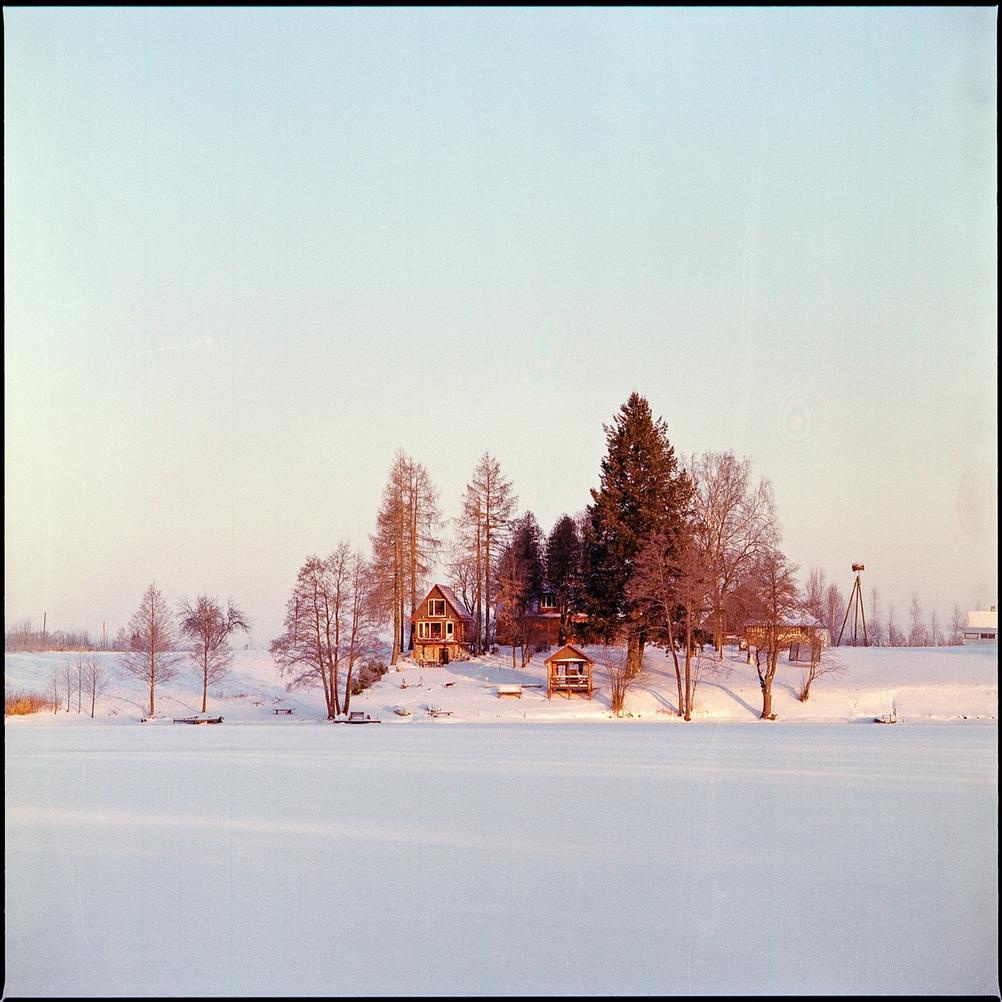
- Camera
- Mamiya C220
- Lens
- Mamiya Super-Sekor 180mm f4.5
- Film
- Lomography Color Negative 100 EI100
- Development
- Tetenal Colortec C-41
- Scanner
- Epson V600
Colors work really well with landscapes. It truly does bring in the scene in all it's colorful glory as you saw it in your brain.
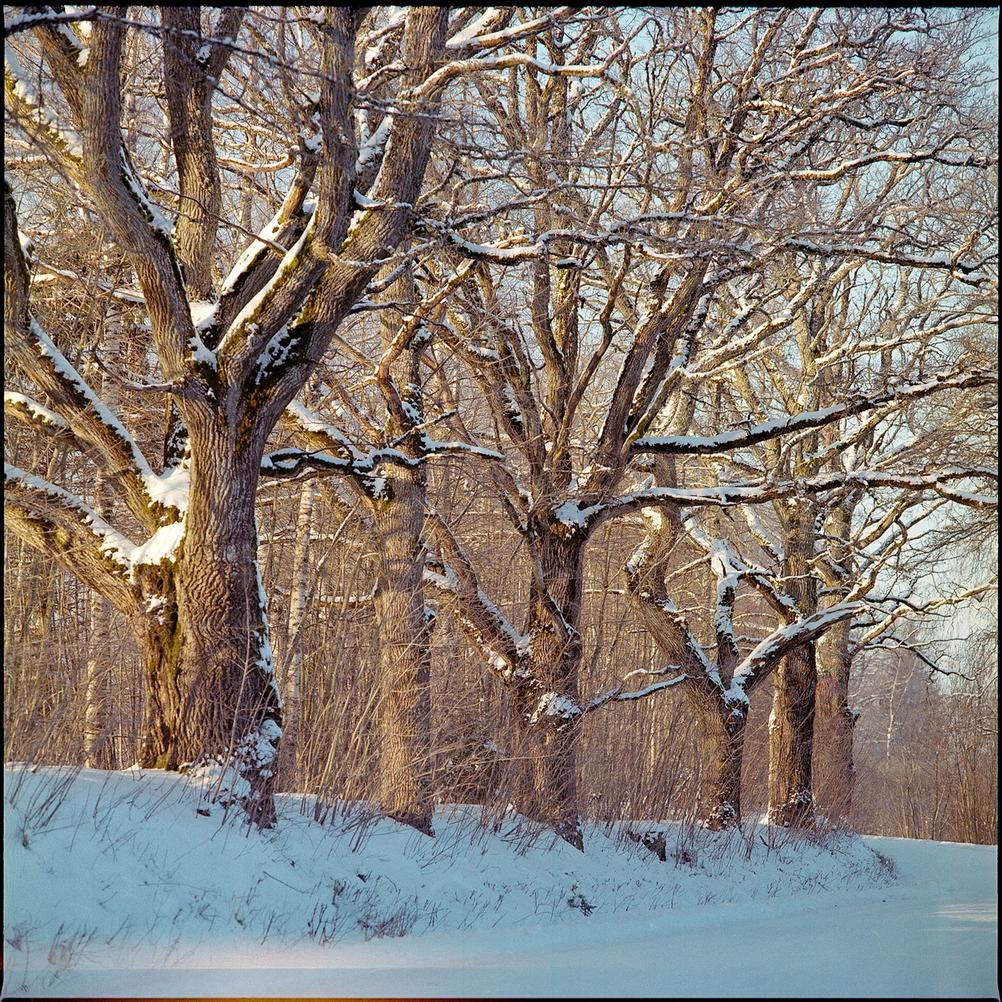
- Camera
- Mamiya C220
- Lens
- Mamiya Super-Sekor 180mm f4.5
- Film
- Lomography Color Negative 100 EI100
- Development
- Tetenal Colortec C-41
- Scanner
- Epson V600
You can feel the slightly cooler color rendering here. Sunrise colors are still looking warm but definitely not pushed to warm and if anything are shifting more towards blue.
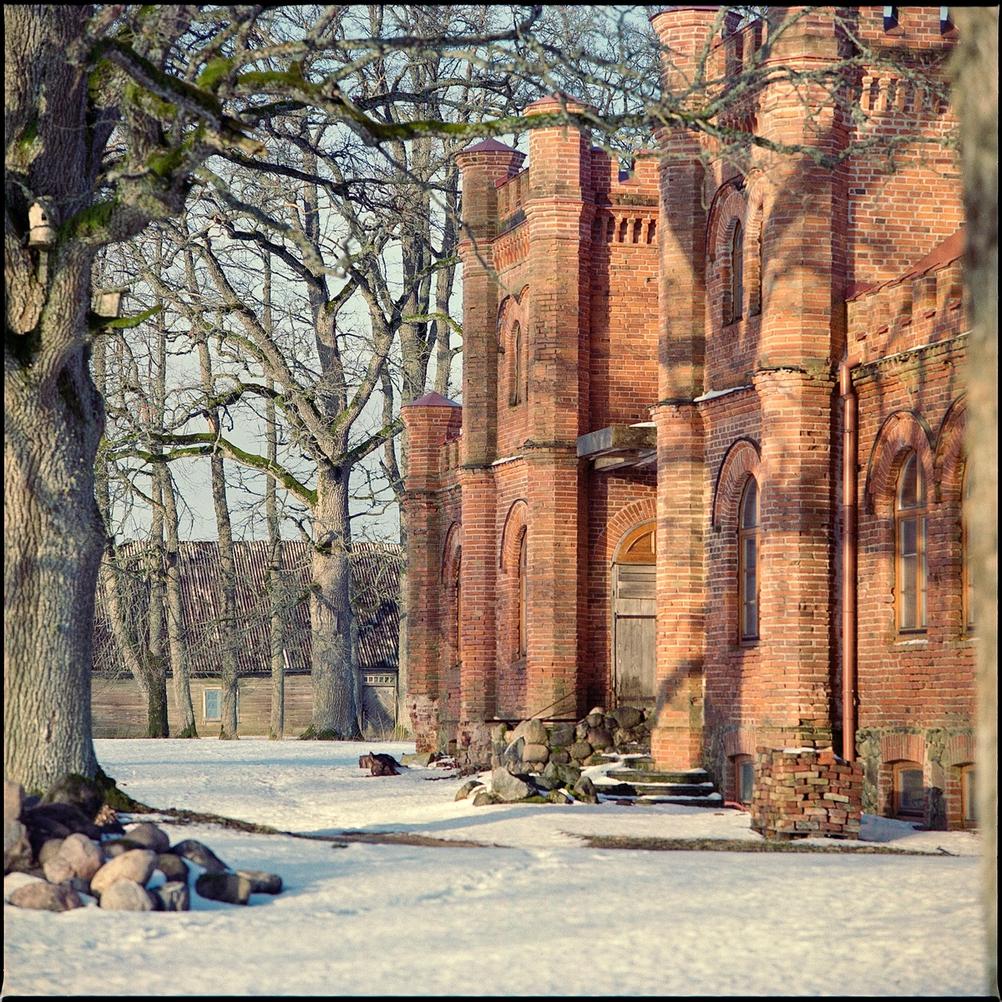
- Camera
- Mamiya C220
- Lens
- Mamiya Super-Sekor 180mm f4.5
- Film
- Lomography Color Negative 100 EI100
- Development
- Tetenal Colortec C-41
- Scanner
- Epson V600
Another example of the cooler rendering. Sun was shining directly onto the building but it doesn't look too warm in the image.
I also should've framed this higher...
Background Separation & Bokeh
One can assume that one of the main use cases for this lens are portraits. For portraits you expect a certain background destruction. And this lens delivers. Even when fitting a half human in frame ( from head to belly button ) - the background melts away.
Bokeh is very pleasing. Smooth. I expected a harsher background blur because of the clinical nature of this lens. I was wrong in my expectation. Backgrounds are like butter. Even highlights look pleasing - melted together with the other colors. When closing the lens down bokeh remains pleasing. There's more of it visible but it's still not distracting. Top scores for bokeh.
The one thing that I couldn't see from this lens was the 3D-like subject separation. Where the in-focus area seems to be on a completely different layer than the rest. The 80mm lens did have this effect but I'm struggling to recreate it with the 180mm. Small depth of field definitely separates the subject but it doesn't pop it out of the frame. I will still try to find the setting and distance where this happens. Regardless - you can separate the subject with ease. It just won't climb out of the picture.

- Camera
- Mamiya C220
- Lens
- Mamiya Super-Sekor 180mm f4.5
- Film
- Lomography Color Negative 400 EI400
- Development
- Tetenal Colortec C-41
- Scanner
- Epson V600
This was the second photo I took with this lens. But it's the first photo where I was truly amazed. It's very clean. Punchy. Saturated. But still natural looking.
It wasn't shot wide open. It was actually quite closed down. The bokeh is still pleasing to me. It's not destroyed in blur but it is blurred enough to separate the subjects and also give context about the scene.
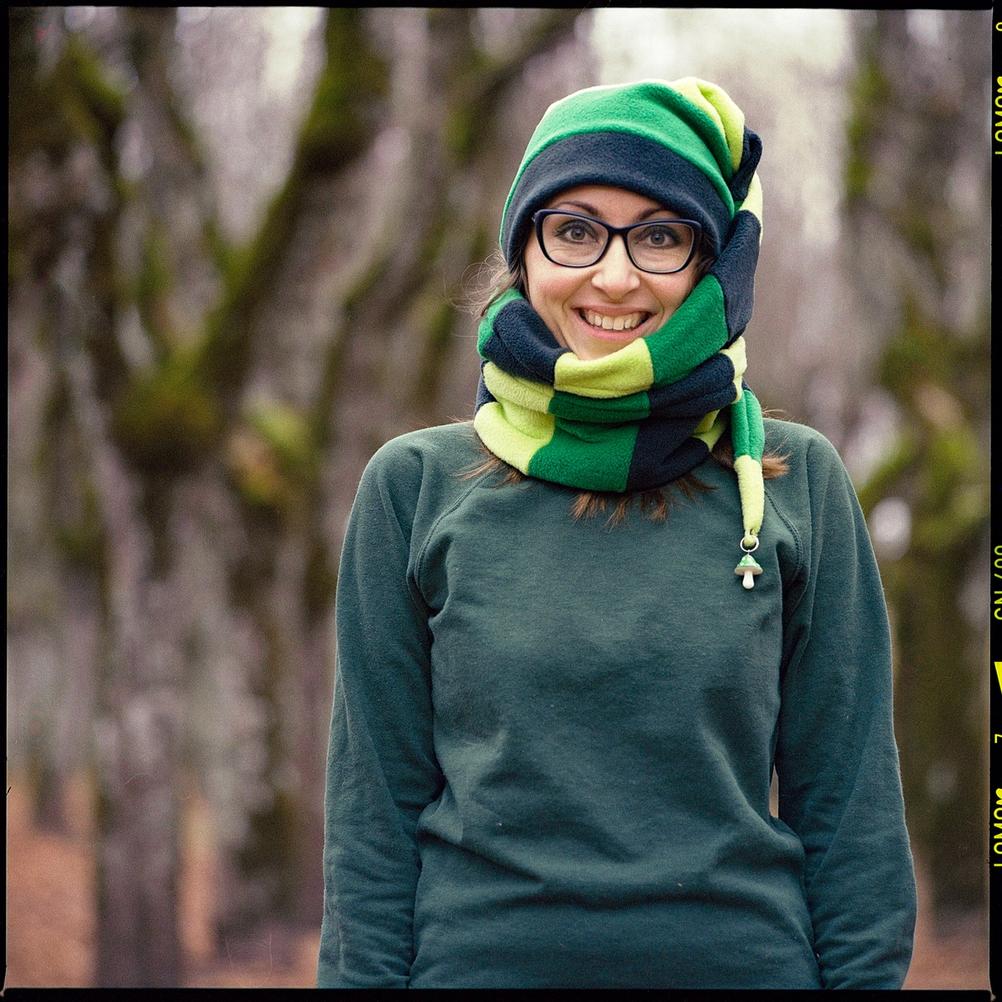
- Camera
- Mamiya C220
- Lens
- Mamiya Super-Sekor 180mm f4.5
- Film
- Lomography Color Negative 400 EI400
- Development
- Tetenal Colortec C-41
- Scanner
- Epson V600
Background is nicely smooshed. I believe this was shote wide open. I was still struggling with light and had to shoot in quite a slow shutter speed ( for a 180mm lens that is not easy to hold ). That's why there is a slight softness although it's not too visible in this size.
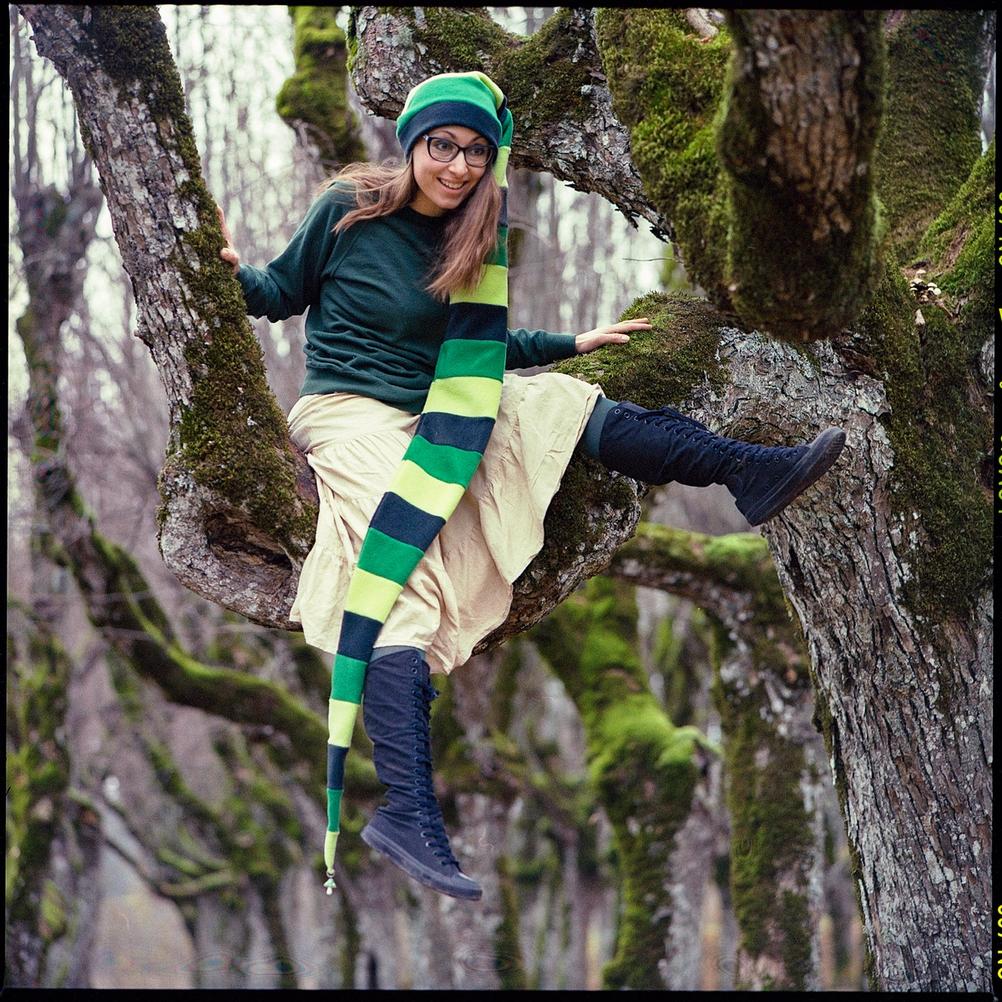
- Camera
- Mamiya C220
- Lens
- Mamiya Super-Sekor 180mm f4.5
- Film
- Lomography Color Negative 400 EI400
- Development
- Tetenal Colortec C-41
- Scanner
- Epson V600
Even if the subject is framed in full size - it's still easy to blow the background out.
Framing could've been improved here but it was cold and our son didn't want to be part of this photo shoot.
Verdict
This is a super lens. It does not have a vintage rendering but as a person that likes vintage rendering - I still like it a lot. It's almost clinical but doesn't reach the boring nature of clinical rendering. It still has some character within. If you are a "vintage lens till I die" fan - it might be best if you stayed clear. Otherwise I would keep an eye on this lens.
Sometimes lenses can give a special, magical rendering that makes it obvious that a certain lens was used to take a photo. This isn't one of those lenses. And you don't want all the lenses to be like that. There is always a need for a precise tool that gives very predictable results. But still has some uniqueness to it - however small it may be.
Whilst not the easiest to find - this lens is still quite cheap. I don't know of a better deal in this focal length for TLR cameras. And even other medium format cameras.
It's not all perfect. The weight and size of the lens makes the TLR harder to use. You won't be throwing it around your neck and having a brisk walk. Slight weight training will benefit the wearer of a TLR with this lens.
Older versions of this lens are slightly cheaper but the super Super-Sekor version isn't much more expensive so I would try to get the super version. I do think that it's the most super of all the versions although I have not shot older ones.
Super!

- Camera
- Mamiya C220
- Lens
- Mamiya Super-Sekor 180mm f4.5
- Film
- Lomography Color Negative 400 EI400
- Development
- Tetenal Colortec C-41
- Scanner
- Epson V600
The lens also works just fine in the cold. And don't forget that the Mamiya C System cameras allow you to focus really close. This is definitely not the closest it would go.
